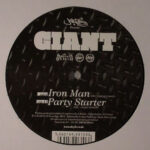“The Candy Man Song,” performed by the legendary Mississippi John Hurt, is a tune that sticks with you long after the last note fades. For many, including myself, this track served as an early introduction to the captivating world of Hurt’s fingerstyle guitar and his seemingly gentle yet subtly provocative lyrical style. My personal journey with this song began with the Blues at Newport LP from 1963, a seminal album that opened my ears to a pantheon of blues greats.
This album wasn’t just a collection of songs; it was an education. Within its grooves, I discovered the raw talent of Dave Van Ronk, the boogie-woogie energy of John Lee Hooker, and the soulful depth of John Hammond. While I had some familiarity with Reverend Gary Davis and the duo of Brownie McGhee and Sonny Terry, their performances on Blues at Newport remain etched in my memory with particular clarity. This record became a constant companion, its tracks serving as a wellspring for my own musical explorations, inspiring previous writings on Van Ronk’s interpretations of blues classics like “That Will Never Happen No More” and “Gambler’s Blues“, McGhee and Terry’s rousing rendition of “Key to the Highway”, Hammond’s electrifying take on Chuck Berry’s “No Money Down,” and Davis’s powerful “Samson and Delilah.” Among these gems, “Candy Man” by Mississippi John Hurt stood out, though its intricacies took years for me to fully grasp.
The Delayed Appreciation for “Candy Man” and Hurt’s Guitar Genius
While I readily absorbed Hurt’s more straightforward fingerpicking arrangements in songs like “See, See Rider,” “My Creole Belle,” “Stagolee,” and “Richlands Woman,” “Candy Man” remained elusive. By my mid-teens, I was confidently playing numerous Hurt tunes, including “Let the Mermaids Flirt with Me,” “Louis Collins,” and “Got the Blues, Can’t Be Satisfied.” However, “Candy Man” resisted my attempts until much later, a decade or two down the line. It wasn’t until I began teaching at blues workshops that the necessity of dissecting the song’s unique E7 chord forced me to finally unlock its secrets. Hurt’s playing was characterized by such delightful quirks and inventiveness; even deciphering the timing of “Satisfied and Tickled Too” presented its own set of challenges.
Looking back, perhaps my delayed understanding of “Candy Man” was serendipitous. As a young boy drawn to the darker narratives of murder ballads, tackling a song brimming with adult innuendo might have been… premature. Singing about a “stick of candy nine inches long” carries a weight of meaning that resonates differently with youthful innocence compared to mature understanding.
The Sweetly Seductive Lyrics and Mississippi John Hurt’s Persona
Mississippi John Hurt cultivated an image of gentle sweetness, almost saintly in nature. This persona made his embrace of a song like “Candy Man” seem paradoxical to some. However, “Candy Man” was not an anomaly in Hurt’s repertoire. His music often subtly explored themes of love and desire. The suggestive “loving spoonful” from “Coffee Blues” even lent its name to a rock band, highlighting the underlying sensuality present in his seemingly innocent tunes. Furthermore, as explored in my analysis of his version of “Salty Dog,” it’s highly probable that Hurt, like many southern secular singers of his time – and even Reverend Gary Davis, who also recorded a song titled “Candy Man” – possessed a broader lyrical palette than what was formally recorded. Erotic undertones were a common thread in rural folk culture, a natural reflection of life’s realities, even if expressed with playful discretion.
More recently, another layer of interpretation has emerged for me within “Candy Man”: a hint of homoeroticism. While the lyrics initially address women, the cautionary lines about standing too close to the candy man lest he “ease a stick of candy into your hand” subtly broaden the song’s suggestive reach. The invitation to a “good friend of mine” to try his candy, with the promise of lasting satisfaction, further deepens this potential reading.
Regardless of lyrical interpretation, “Candy Man” is undeniably a masterclass in guitar arrangement. It stands as a testament to John Hurt’s artistic choices, particularly his decision to perform such a song for a predominantly young, white audience at Newport. It was a bold and brilliant move.
And that enigmatic E7 chord? The key lies in using the middle finger to bar both the fourth and fifth strings at the second fret. This frees the ring finger to fret the seventh on the second string, allowing the pinky to reach that distinctive high note on the fourth fret of the first string. It’s a technique that unlocks not just “Candy Man,” but a deeper appreciation for the nuanced genius of Mississippi John Hurt.

